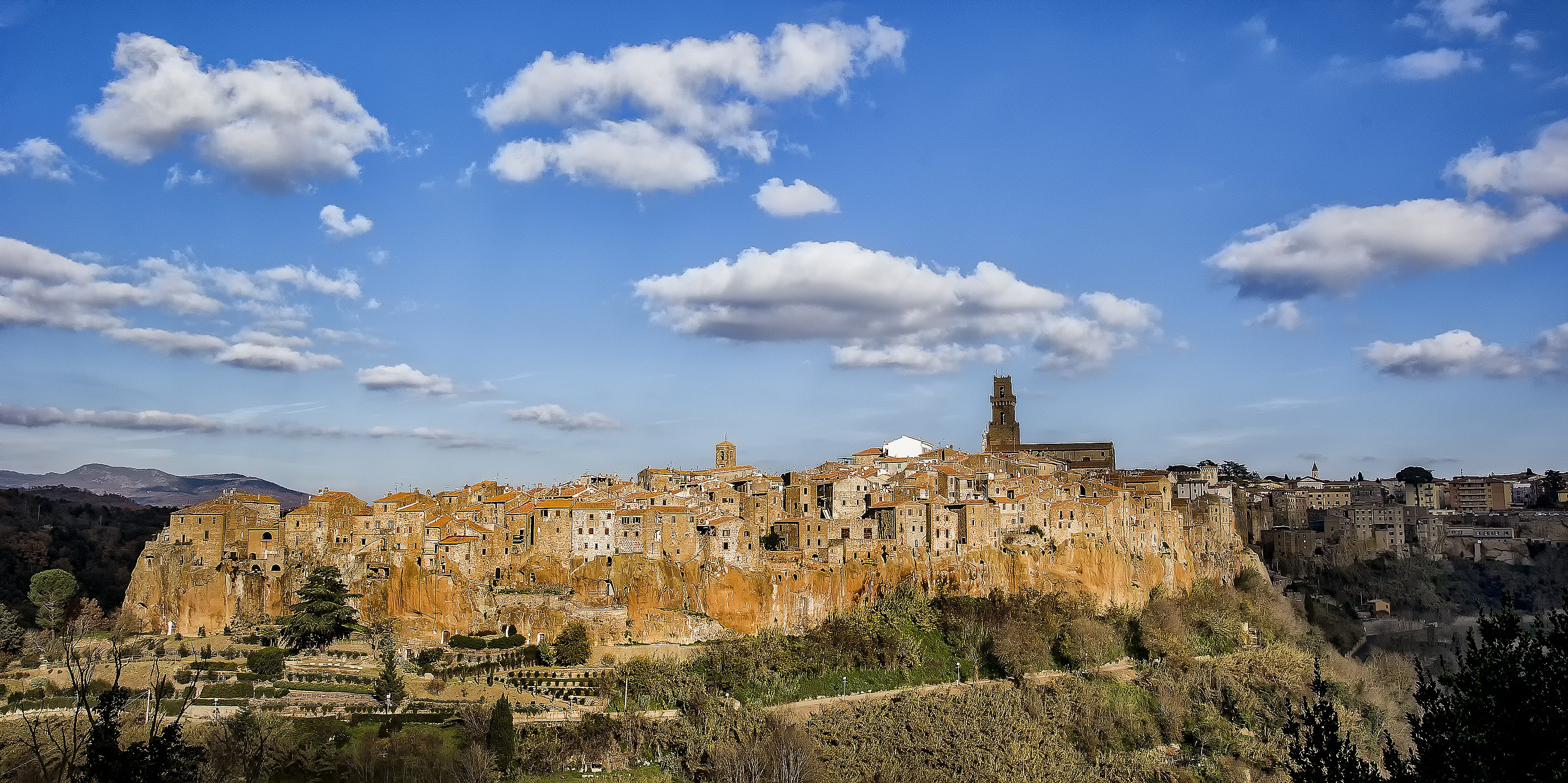The characteristic historic center is known as little Jerusalem due to the historic presence of a Jewish community that has always been well integrated into the social context and has its own synagogue here.
Arriving in Pitigliano from the sea, you notice the characteristic houses that protrude from a large overhanging spur of tuff.
The cliff of Pitigliano is surrounded on three sides by as many ravines, full of caves dug into the tuff; the Lente, Meleta and Prochio rivers flow in the valley floor.
Pitigliano was already a popular and inhabited place since Etruscan times, when numerous settlements excavated in the tuff were founded here and attested to from the late Bronze Age (12th-11th century BC. ). An Etruscan center was also located in the place where the town stands today, as evidenced by the remains of the walls found in the Capisotto district and then disappeared between the end of the 6th and the beginning of the 5th century BC.
The Orsinis governed the County of Pitigliano for centuries, defending them from the continuous attempts at submission by Siena and Orvieto first, and then by Medici Florence. It was only in 1574 that Niccolò IV Orsini ceded the fortress to the Medici and in 1604 Pitigliano was annexed to the Grand Duchy of Tuscany, ceded by Count Gian Antonio Orsini to settle his debts. However, the Medici lost interest in the fate of the city, which soon fell into decline, and only in 1737, the year in which the grand duchy passed to the Lorraines, did Pitigliano experience a slow economic and cultural recovery.
Places to visit in the historic centre:
•Palazzo Orsini, an imposing fortified palace, built as a fortress by the Aldobrandeschi (11th-12th century) and then the seat of the Orsini county. The current appearance is due to some renovations carried out by the Lorraines between 1777 and 1840, even if in recent times the Superintendency for artistic and cultural heritage of Siena and Grosseto has imposed an external plastering of dubious quality.
The complex houses the diocesan museum of Palazzo Orsini, rich in works of art covering a period of time from the Middle Ages to the modern age strong>, and the archaeological civic museum, where various finds from the nearby archaeological areas are kept.
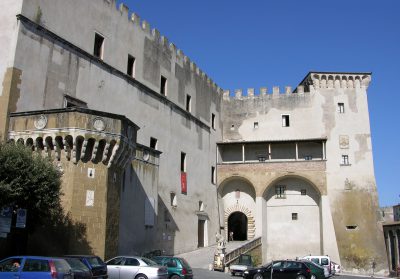
• The Orsini park </ strong> is located in Poggio Strozzoni, a hill that bears this name for the crime perpetrated by Count Orso Orsini on his wife, suspected of treason. It was built at the end of the 16th century on the model of the park of monsters in Bomarzo. Some sculptures and the two monumental thrones stone seats on the crest of the hill are conserved.
•Synagogue of Pitigliano, a sixteenth century synagogue, inside which the Aron stands out on the back wall and the Tevà in the centre; on the walls are inscriptions of biblical verses while at the top is the gallery reserved for women. Under the Jewish temple are the rooms for the ritual bath, the impressive unleavened bread oven, the kosher butcher shop, the kosher cellar and the dry cleaners.
•Cathedral of Saints Peter and Paul, Duomo di Pitigliano, was built in the Middle Ages, remodeled during the 16th century and profoundly modified in subsequent periods. The late-Baroque facade is flanked on the left by the bell tower which is plastered in the lower part above which it has maintained its original appearance in tuff dating back to the medieval period. The interior of the cathedral, in the Baroque style with a single nave with side chapels, houses various works of art ranging mainly between the 17th and the 19th century. Among the others, two canvases of the “life of Saint Gregory” – Henry IV in Canossa and the predestination of the young Ildebrando – by the Manciano painter Pietro Aldi< are mentioned. /strong>
•Sanctuary of the Madonna delle Grazie, built in the 14th century as a rural chapel, was transformed into a sanctuary dedicated to the Virgin during the 16th century and enlarged in later times when the place became the seat of a Franciscan community. It was restored in 1962.
The interior of the church has a single hall, with altars enriched by simple Mannerist and Baroque decorations.
The bell tower rises outside the church, against the back of the left side. Behind the left side of the church, just beyond the bell tower, the remains of a small chapel are visible.
•The rock oratory, located at the Porta di Savona, is a small cave of ellipsoidal shape used as a place of worship dating back to the 4th century which opens into the cliff which runs along the road.
•Church of San Rocco, located between via Vignoli and vicolo San Rocco, dates back to the 15th century, but after years of abandonment and neglect it was deconsecrated and used as a private residence. Today on the facade there is a niche with a statue.
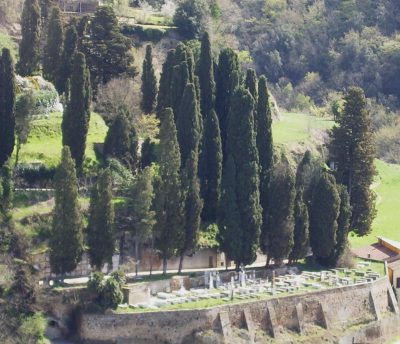
• The Jewish cemetery is located beyond the Melata stream which borders the town to the south, it was built during the second half of the sixteenth century as a burial place< /strong> for those belonging to the Jewish community of Pitigliano, which has always been quite numerous and well integrated into the social fabric of the town in the Tufo area.
The construction was commissioned by Niccolò IV Orsini, who initially gave his doctor the corresponding area in order to be able to build the tomb where his Jewish wife could be buried. Subsequently, the creation of a real cemetery space was authorized here, in order to give the entire Pitigliano Jewish community a space in which to bury their loved ones.
The origin of the Jewish cemetery of Pitigliano laid the foundations for the construction of the Synagogue within the city walls: the temple was in fact built during the last decade of the 16th century.
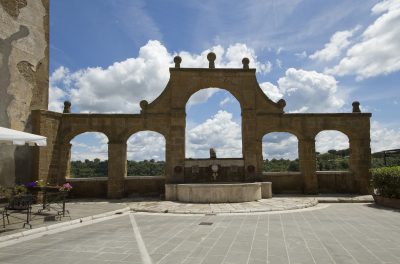
• Inside Piazza della Repubblica there is the Fountain of the Seven Spouts, a characteristic fountain built in 1545.
The current denomination was given around the middle of the eighteenth century, when the seven spouts that have characterized the fountain since then were open. It looks like an imposing and monumental work, thanks to the presence of the head of the aqueduct from which it draws the water necessary for its functioning.
The headboard is made up of five imposing arches covered in tuff ashlars.
The spouts, from which the water currently flows which is then discharged into the reflux tank below, are exquisitely decorated with sculptural works, made in different eras and styles , each of which depicts the head of an animal.
•The Medici aqueduct is a hydraulic engineering structure designed for the water supply of the village of Pitigliano.
The construction of the infrastructure began in the sixteenth century, based on a project by Antonio da Sangallo the Younger. At that time, the Orsinis decided to improve the water supply service, both to their residence and to the entire city.
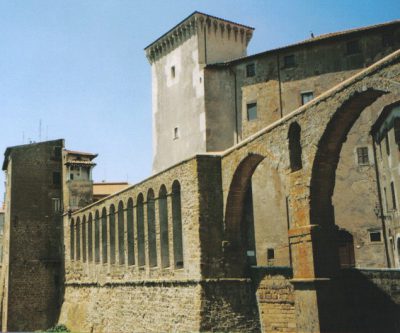
The construction of the work was considerably complicated by the roughness of the territory which had a very steep slope between the town of Pitigliano and the underlying valley crossed by three streams.
Precisely during the 17th century, the Medici continued the work, managing to complete the work which, still today, allows us to grasp its grandeur and majesty. The aqueduct was completed in 1639. In the 18th century the Lorraines carried out renovation works which ended with the construction of a succession of small arches.
The aqueduct, entirely covered in tuff, integrates fully both with the geological context of the area and with the other architectures of the previous era.
•Poggio Buco is an Etruscan archaeological site, in ancient times there was a flourishing Etruscan city, dependent on Vulci and rivaling nearby Pitigliano, inhabited since the late Bronze Age (12th century BC). The city disappeared at the beginning of the 6th century BC. for unknown reasons and unknown is also the name that this town had. For years it was hypothesized that the Poggio Buco area was the site of the lost city of Statonia, a hypothesis which was later refuted. The archaeological sites of Caravone, Insuglietti, Le Sparne, Selva Miccia are part of Poggio Buco.
•The Vie Cave, also known as Cavoni, constitute a suggestive road network from the Etruscan era which connects various settlements and necropolises</strong > in the area between Sovana, Sorano and Pitigliano, developing mainly in the trenches between steep rock walls of tuff, at times over twenty meters high: these characteristics also constituted a effective defense system against possible invaders.
In Roman times, the Vie Cave became part of a road system which connected to the main section of Via Clodia,< /strong> ancient road linking Rome and Saturnia, through the city of Tuscania, which branched off from the Via Cassia in the Lazio region.
The Vie Cave are today an ideal habitat for various species of fern.
Around Pitigliano, there are various Vie Cave, including the one directed towards the archaeological area of Sovana.
Among others, the following should be mentioned:
The Vie Cave del Gradone, south of the center beyond the Meleta river, where the Alberto Manzi open-air archaeological museum is also located.
The Vie Cave of San Giuseppe.
The Vie Cave of Fratenuti.
The Vie Cave of the Madonna delle Grazie, which develop south-west of the town around the sanctuary of the Madonna delle Grazie.
In the historic center of Pitignano, we can find many cellars dug into the tuff and excellent local food products that you can find in the historic centre.
The area in which Pitigliano stands is the production area of the white wine of Pitigliano and the red wine of Sovana, each of which has some variations based on the production regulations.
The Alberto Manzi open-air archaeological museumis an educational itinerary set up on the Gradone plateau, inside the suggestive Vie Cave.
The idea was born during the administrative mandate of Alberto Manzi, a famous educator and pedagogist. After his death, the project to create the open-air museum continued until its definitive inauguration on 3 July 2004. Managed jointly with the archaeological civic museum, it is included in the Maremma provincial museum network.
The museum is divided into two areas: the “city of the living and the “city of the dead“. 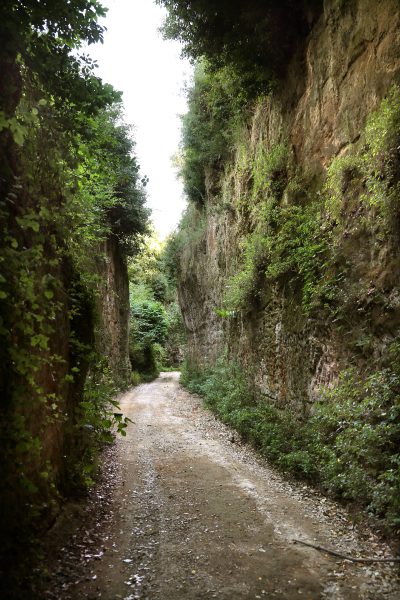
In the first area, the “city of the living“, two houses have been set up that represent the ancient town of Pitigliano. It is possible to admire a full-scale model of a circular hut from the final Bronze Age (12th-11th century BC), made with a clay and straw mixture raised on a frame of poles and reeds ; and another of an Etruscan house of the archaic age (7th-6th century BC), in masonry and made up of three rooms: the kitchen, the space for women’s activities with hearth and frame, and the thalamos, the bridal chamber. The route then continues inside the via cava, ending up overlooking a panoramic glimpse of the valley of the Meleta stream and the Jewish cemetery of Pitigliano.
After having continued along the via cava for a short while, you reach the so-called “city of the dead”, where it is possible to admire the Etruscan necropolis. Here, inside a tomb, the burial of an imaginary married couple, Velthur and Larthia, was set up, with all the rich equipment who used to accompany the deceased, with the aim of informing the visitor of the progress of funeral practices with the aid of photographic material which reproduces, thanks to figures, Etruscan ritual scenes with music and dances. The visit continues inside a wood where the Gradone necropolis is located, which presents a series of chamber tombs with a cruciform plan with stepped dromos from the 7th century BC.
Leaving the via cava, the path continues to the right and leads to the banks of the Meleta stream: once you have crossed the pedestrian bridge, you arrive at the monumental necropolis of San Giovanni. The necropolis dates back to the second half of the 6th century BC. and is made up of various chamber tombs dug into the tuff; there are also a series of box tombs from the Hellenistic age (2nd century BC). Of this area there are two tombs with a monumental structure.
Traditions and folklore
•Torciata di San Giuseppe: traditional Pitigliano festival which takes place every March 19th to celebrate the arrival of spring . The event consists of a historical procession in costume which passes through the streets of the historic centre before arriving in Piazza Garibaldi, where we witness the show of flag-wavers and, once when sunset came, to the burning by the torchers of a pile of fagots on which a puppet made of reeds, called “invernacciu”, was placed, which is >symbolize winter. Once the bonfire is consumed, the ashes are collected by the women and kept in the houses as a sign of good luck.



